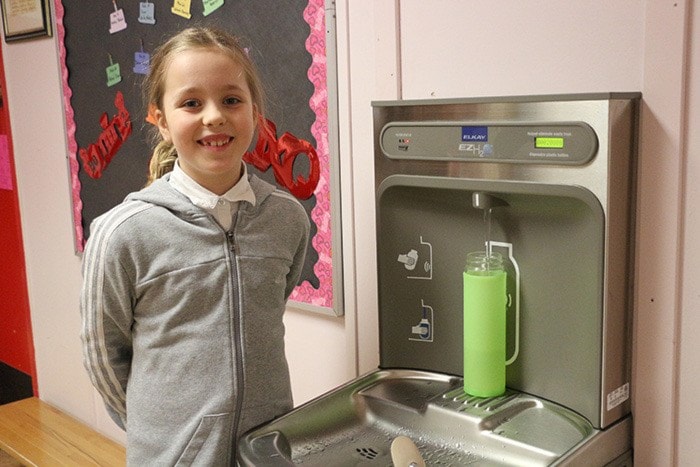As it stands, there is no routine testing of lead or contaminates in school drinking water in the province.
In February, Northern Health discovered high levels of lead in the water at four Prince Rupert elementary schools.
The incident led MLA Jennifer Rice to introduce a private member’s bill, Safe Water for Schools Act 2016, on April 7.
“This is looking at having a systematic approach to it, making sure that if schools do have lead in their drinking water that a mitigation plan is implemented and people are held accountable,” Rice said.
When Rice introduced the bill she quoted a report from the Ministry of Health published in 2014 that stated,“Given the consequences of lead exposure during childhood and the effects that can occur even at low levels, reducing lead exposures should be a public health priority”.
Exposure to even low levels of lead before the age of six can cause learning impediments and it has been correlated with attention deficit hyperactivity disorders (ADHD) and other behavioural disorders.
“If we can remove one more barrier to learning then I think everyone would be more successful, children and teachers,” Rice said.
The B.C. Teachers Federation (BCTF) announced its endorsement for the bill and urges the provincial government to support it as well.
News of the elevated levels of lead in Prince Rupert school water prompted the BCTF to pass an emergency resolution to demand the Ministry of Health test the drinking water in all North Coast schools and to develop a province-wide water monitoring program at its annual general meeting in March.
“I hope that all the parties can support this bill because what we’re talking about is the health and safety of our children and we need to do whatever we can to make sure they’re safe and remain healthy at school,” BCTF president Jim Iker said.
He added that there is concern for the children but the teachers as well, who are also at risk of exposure.
“Of course we know the main source of lead is lead piping and lead solder that connects the pipes. We believe this condition exists in a lot of our schools where they have lead piping and that needs to be addressed,” he said.
The private members bill now rests with the provincial government who had to choose whether it will be raised for debate or left to the wayside.
Health Minister Terry Lake’s response to the bill is that what the provincial government is doing is adequate.
“With respect to water testing in schools – the public health advice we have been given has indicated that regulation is not needed, as safe water can be provided through strong policy and practices. This is something that we will continue to monitor, and should that change we would certainly be open to reconsidering,” Lake said in an email.
He stated that Northern Health reminded school districts of their responsibility to test the water and implement mitigation measures if needed. Lake included that on Feb. 24 the education ministry, on the recommendation of the provincial health officer, Dr. Perry Kendall, sent a reminder that schools with older plumbing should test their water.
“Dr. Kendall has advised me that lead poisoning overall is not an issue in B.C. and there is no evidence that children are being systematically exposed to high levels of lead in drinking water,” Lake said.
The statement included the statistics that lead levels found in adults and children in B.C. dropped 70-80 per cent since the 1970s. He also includes that the BC Centre for Disease Control did a review of all blood lead testing results in 2009 and 2010 and found very few cases of high levels of lead.
He did not, however, mention the 2014 report published after the BC Centre for Disease Control investigated elevated levels of copper and lead in a Kitimat school’s drinking water in 2012. The report concluded that the findings support a need for routine monitoring of drinking water in schools.
